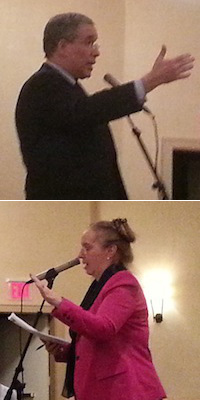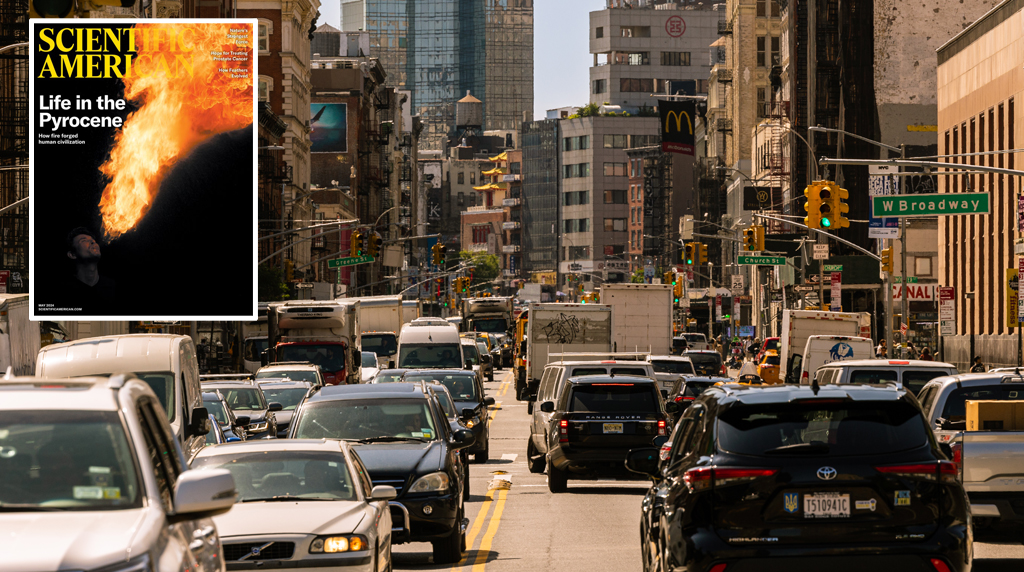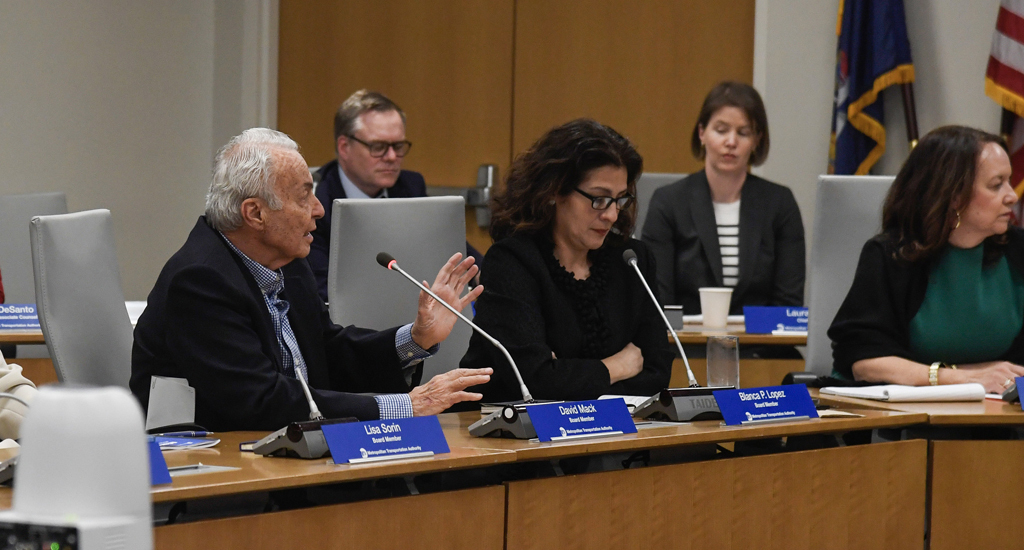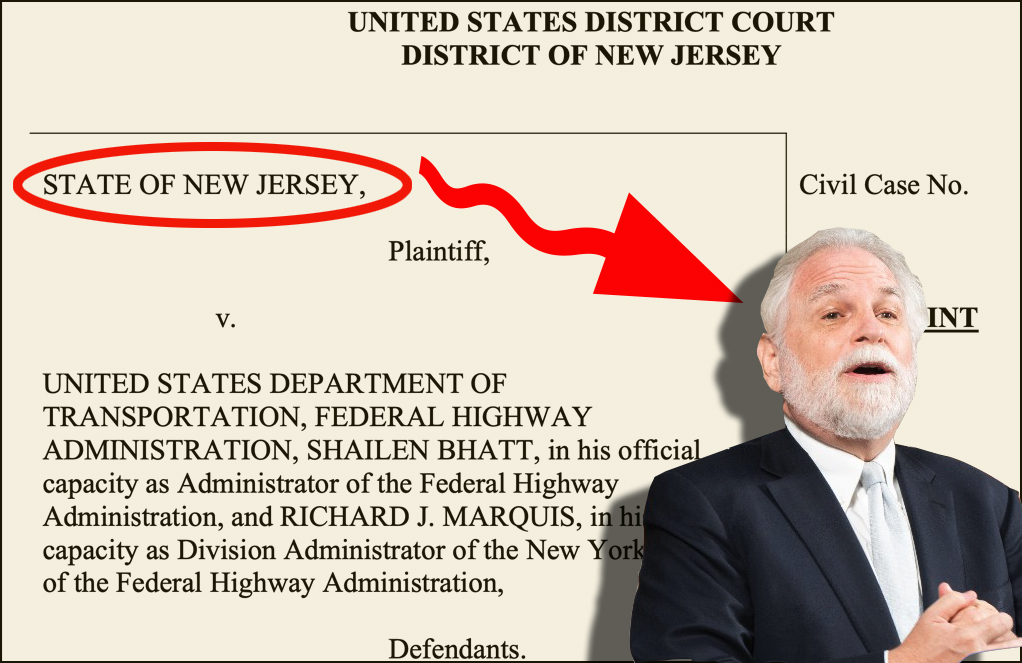Majority Favor Extending Columbus Bike Lane, But CB 7 Fails to Advance It
4:46 PM EST on December 12, 2012
At least 150 people turned out to hear NYC DOT's proposal [PDF] to extend the bike lane to much of the rest of Columbus Avenue. More than two-thirds of the approximately 35 people who testified before the committee were strongly in favor of extending the lane north to 110th Street and south to where it could eventually link up with the Ninth Avenue bike lane.
But both Council Member Gale Brewer and Borough President Scott Stringer, who between them appoint most of the members of CB 7, failed to state positions for or against the proposal when they gave remarks before the committee. Brewer praised DOT's outreach on the project but also placed a priority on avoiding any parking loss, telling the committee, "We can't lose parking." After the vote, she expressed support for the idea of bringing the project to the full board for a vote next month.
Given the strong public support for the proposal last night, Transportation Alternatives today said that DOT should take action without waiting for the community board to sign off on the project.
The DOT proposal would create a continuous protected bike lane from 69th Street to 110th Street. Between 69th Street and Broadway, DOT would forgo a protected bike lane in favor of an "enhanced shared lane," similar to the sharrows on Second Avenue in Midtown. The agency also wants to increase the number of vehicle lanes in this section from three to four to make more room for cars that back up on Columbus.
Near the end of the three-hour meeting, committee member Ken Coughlin put forth a resolution to support DOT's proposal while asking the agency to consider changes to the shared lane concept. The committee voted 5-4 in support, with one abstention. Committee chairs Andrew Albert, appointed by Stringer, and Dan Zweig, appointed by Council Member Inez Dickens, both voted in opposition. Because a majority of the committee did not vote in favor, the vote was considered insufficient to automatically advance to the full board, a near-repeat of the committee's vote on the original Columbus Avenue bike lane segment over two years ago.
After that tie vote, then-CB 7 chair Mel Wymore brought the project before the full board for a vote. Current CB 7 chair Mark Diller said he wants the committee to revisit the proposal early next year before it goes to the full board. "I want this done by February," he told Streetsblog, adding that DOT could not begin construction until warmer weather in the spring. It would be possible for any board member to bring the project up for a vote at the next full board meeting, according to the CB 7 parliamentarian.
The hesitance of the local electeds and CB 7 committee to endorse the extension of the redesign comes despite solid data showing how a protected bike lane and pedestrian refuges have made the street safer. Where Columbus Avenue does have a bike lane, drivers have slowed from an average of 26.8 mph to 22.3 mph, and the portion of drivers clocked above the 30 mph speed limit has dropped from 14 percent to 6 percent. (And while car traffic volumes remained constant, driving this mile of Columbus Avenue now takes 3 minutes instead of 4.38 minutes, in part because double parking has decreased.)
Pedestrian injuries have dropped significantly -- 41 percent. Total crashes have risen slightly, but remain generally in line with data from previous years. "Crash statistics are very volatile," DOT's Hayes Lord said. "Our real concern is crashes with injuries," which were down 19 percent. Although the number of cyclist injuries increased from 5 per year to 7 per year, Lord cautioned that this small number is subject to random variation and noted that the act of cycling had become safer. "Let's also recognize that there was a 48 percent inrease in the number of cyclists using the street," he said.
Up to 30 percent of cyclists are riding in the general travel lanes at any given time, Lord said, in part because some of them are moving close to the speed of other vehicular traffic, while others are preparing to make a right turn. Only 2.3 percent of bike riders now ride on the sidewalk, a big drop from before the bike lane was installed.
Some board members seemed unwilling to acknowledge the fact that the redesign has improved safety on the street. Gabriela Rowe, head of the Mandell School on Columbus Avenue, voted in support of the bike lane when it last came before the full board, but wanted more cyclist education and enforcement. After a student was struck by a bike rider while working on a planting in one of the pedestrian islands, she said, "I cannot in good conscience support their expansion, particularly in areas with large numbers of children."
DOT's proposal to extend the Columbus Avenue bike lane would look very similar to the existing lane. A total of 61 parking spaces would be eliminated for pedestrian refuges, turn lanes and mixing zones, resulting in a loss of 24 percent of the spots on the east side of Columbus Avenue. Peter Arndtsen of the Columbus/Amsterdam BID and Barbara Adler of the Columbus Avenue BID asked DOT to consider eliminating mixing zones entirely to preserve parking. Committee member Marc Glazer proposed an amendment to this effect, but it failed in a tie vote. Mixing zones are an essential component of the redesign, allowing cyclists to safely interact with left-turning motorists.
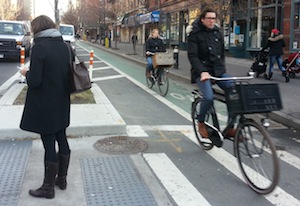
The "enhanced shared lane" concept -- proposed for an area where a pedestrian was seriously injured just this morning -- was received skeptically by most of the board and audience. "If you wouldn't let your 10 year-old ride in it, it's not a bike lane," Randy Cohen said, and a couple of 10 year-olds testified that, in fact, they feel much safer in the protected bike lanes.
South of the "enhanced shared lane" proposed between 69th and 65th Streets, construction for the city's third water tunnel (which is also affecting bike lanes on Ninth Avenue and Grand Street) is likely to extend into 2014. Once it is complete, DOT says it will discuss plans for a permanent connection to the Ninth Avenue protected bike lane, which begins at 59th Street. In the meantime, DOT is looking into working with the project's contractors to establish a temporary construction-zone protected bike lane, similar to what's been installed on Ninth Avenue in Hell's Kitchen.
DOT is contacting each retail business on the corridor to see how the plan can address their loading and parking needs. Most of the businesses contacted have been in the northern section of Columbus Avenue. Manhattan Borough Commissioner Margaret Forgione said that the agency could complete this outreach in a few weeks and share its results with the board.
Following last night's vote, the extension could be introduced at CB 7's next full board meeting on January 3, even without the committee's endorsement. While Diller, the board chair, said he wants the project to clear the committee first, Brewer expressed support for this option. "Somebody could bring it to the full board," she told Streetsblog, "and I hope they do that."
Borough President Scott Stringer, meanwhile, had this to say during his public testimony: "I wanted to thank the community board for taking so much time on this issue."
Stay in touch
Sign up for our free newsletter
More from Streetsblog New York City
Komanoff: A ‘Noise Tax’ Can Ground NYC Helicopters
A proposed $400 “noise tax” on “nonessential” flights is a start — and it will work.
Thursday’s Headlines: Welcome to the War on Cars, Scientific American
Our favorite story yesterday was this editorial in an unexpected place. Plus other news.
Meet the MTA Board Member and Congestion Pricing Foe Who Uses Bridges and Tunnels For Free Every Day
Mack drives over the transportation authority's bridges and tunnels thanks to a rare perk of which he is the primary beneficent.
Randy Mastro Aspires to Join Mayor’s Inner Circle of Congestion Pricing Foes
The mayor's reported pick to run the city Law Department is former deputy mayor under Rudy Giuliani and notorious foe of bike lanes and congestion pricing.
Donald Shoup: Here’s a Parking Policy That Works for the People
Free parking has a veneer of equality, but it is unfair. Here's a proposal from America's leading parking academic that could make it more equitable.
